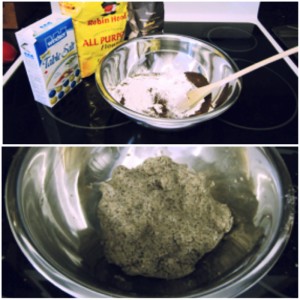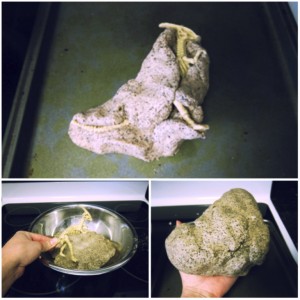 She’s back! A T. rex Named Sue has returned to Halifax this winter. Starting January 23, the world’s largest, most complete and the best preserved T-rex fossil will be at the Discovery Centre. We have scientists called palaeontologists to thank for bringing Sue to “life”. Palaeontologists are people who study the evolution of life and learn about past environments and climates through fossils. Palaeontologists are often confused with Archaeologists, who focus more on human evolution and culture.
She’s back! A T. rex Named Sue has returned to Halifax this winter. Starting January 23, the world’s largest, most complete and the best preserved T-rex fossil will be at the Discovery Centre. We have scientists called palaeontologists to thank for bringing Sue to “life”. Palaeontologists are people who study the evolution of life and learn about past environments and climates through fossils. Palaeontologists are often confused with Archaeologists, who focus more on human evolution and culture.
Palaeontologists work at dig sites looking for fossils. A fossil is any evidence of past plant or animal life that is preserved in rock. Most fossils are found in sedimentary rock, which is the type of rock formed when layers of dirt, sand and smaller rocks are compressed together over millions of years.
When an animal or plant dies, most often they decay or are eaten. But sometimes, they become encased in mud, and over time, are squeezed together between layers of rocks. Water carrying minerals seeps into the bones, teeth, or plant tissue, and over millions of years completely replaces them with rock material. The fossil that’s produced has the same shape as the original living thing, but it is actually more similar to the surrounding rock.
Palaeontologists carefully excavate fossils from rock using a variety of tools to get the job done. These tools can range from shovels, drills, hammers, and chisels to finer tools like a paintbrush. You can try excavating your very own fossil using a variety of tools with the following activity.
Ingredients:
Fossil rock dough
2 cups flour
1 cup salt
1 cup ground coffee
1 cup water
Plastic dinosaur model (you can find one at the Discovery Shop!)
Cookie sheet
Parchment paper or aluminum foil
Wire rack
Excavating tools (household items)
Examples: chisel, hammer, popsicle stick, scissors, old toothbrush, toothpick
Instructions:
In a large mixing bowl, combine the flour, salt and ground coffee to make for the fossil rock dough. Slowly add the water and stir (feel free to add more water if needed).
Knead the dough until a pliable ball has formed.
Assemble the dough and the dinosaur model together as shown below 
To get rid of seams and create a smooth surface you can wet the outside of the rock and smooth with hands
Place your fossil rock on a cookie sheet lined with parchment paper or aluminum foil and bake in the oven at 200°F until dry and hard, turning the rocks every 30 minutes (I baked mine for approximately 3.5 hours). After the first hour, transfer the dough to a wire rack to bake evenly on all sides. Alternatively, you can leave it to air dry for 2-3 days.
After you let it cool, carefully start excavating the fossil in the rock using a variety of your tools. Remember to be patient and remove as much rock away from the fossil as possible.
Congratulations on your first fossil excavation! Continue your educational journey at the Discovery Centre while Sue is here – you can learn more about fossils, palaeontology and even come face to face with the most famous dinosaur in the world! A T. rex Named Sue is on until May 8, 2016.
For more great things to discover – visit the Discovery Centre on Barrington Street in Halifax, check out their website or join them on facebook.


